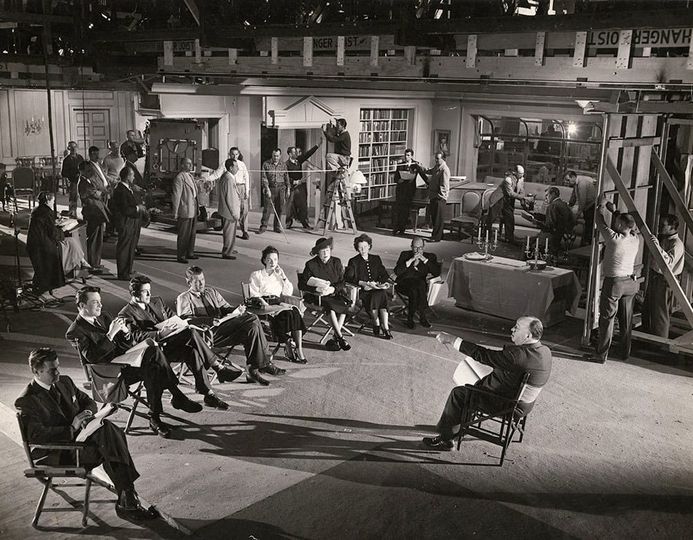Σχοινί (1948). Άλφρεντ Χίτσκοκ
Φωτογραφία: William V. Skall & Joseph A. Valentine
Καλλιτεχνικός Διευθυντής: Perry Ferguson
Διακοσμητής σκηνικού: Howard Bristol & Emile Kuri
Φωτογραφία: John Miehle

Σχοινί (1948). Άλφρεντ Χίτσκοκ
Φωτογραφία: William V. Skall & Joseph A. Valentine
Καλλιτεχνικός Διευθυντής: Perry Ferguson
Διακοσμητής σκηνικού: Howard Bristol & Emile Kuri
Φωτογραφία: John Miehle

Interesting experiment to try to get as much of the film in one “apparent” shot (I think there is one deliberate cut). The set was a complex of breaking walls on wheels to allow the camera to move from room to room with the cast in continuous takes… no steady cam nor CG in those days. Not all the transitions from one camera roll of film to the next were seamless, but a good one for film buffs.
How interesting to see a long shot of the set.
When I first got into the business, I was sent up to the Hitchcock Theatre at Universal, to install a ramp. The ramp for for Sir Alfred to be rolled on Stage for an interview with Barbra Walters, the asked me to stay for the interview. Who was I to say no?
Wow!
Hitch explaining to the whole cast that every take is going to last 11 minutes and nobody’s allowed to screw up!
Where’s Jimmy??
The camera is 🔥
Everyone dressed so formal on set back then.
Hitchcock would have marveled at the film 1917
Dardo
hitchcok military forces😀
Like a theatre stage
Originally considered a failed experiment at making a long shot film with no noticeable editing, it failed in its time due to the lack of technology to allow longer shots and a more sophisticated editing technique to disguise the cuts. At the end, the final product had a very noticeable shot lenght of 10 minutes (which was the amount of time a film reel could store) and and a noticeable cut every 10 minutes perceived by the camera blocking itself in the back of the actors.
Hitchcock said the experiment only prooved that long shots didn’t belong to cinema as the language of filme belonged in editing. But years later the long shot films made a triumphant come back, with more technologically advanced cameras and editing methods in the form of Birdman and 1917.
Rope is to this day a fascinating, if flawed, piece of film history.
Just saw this on TCM
Rope.